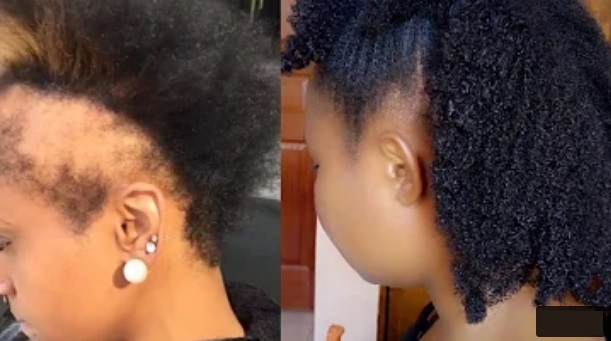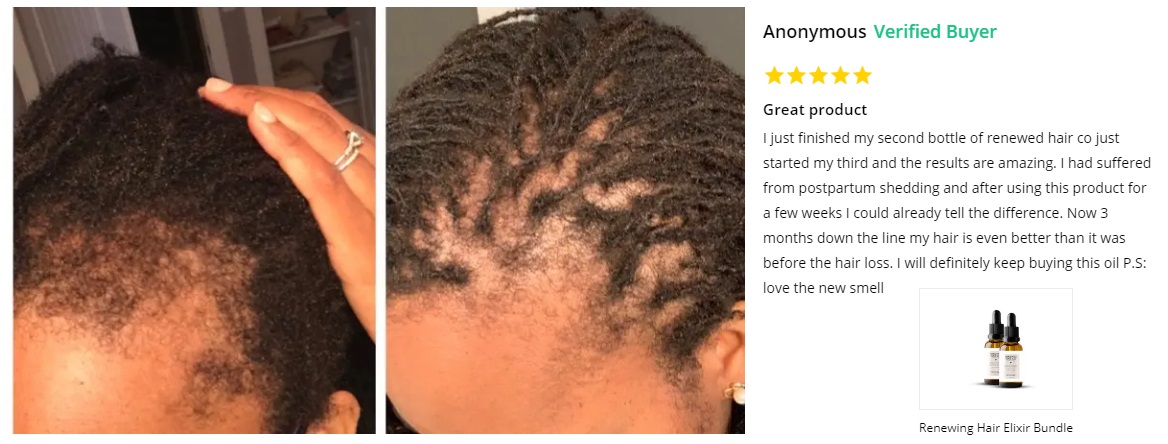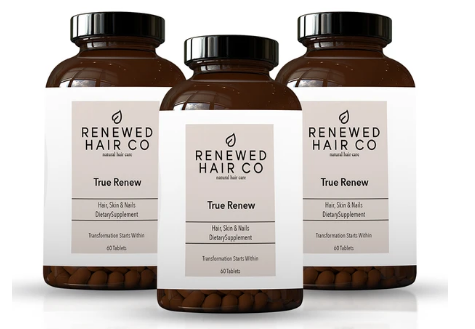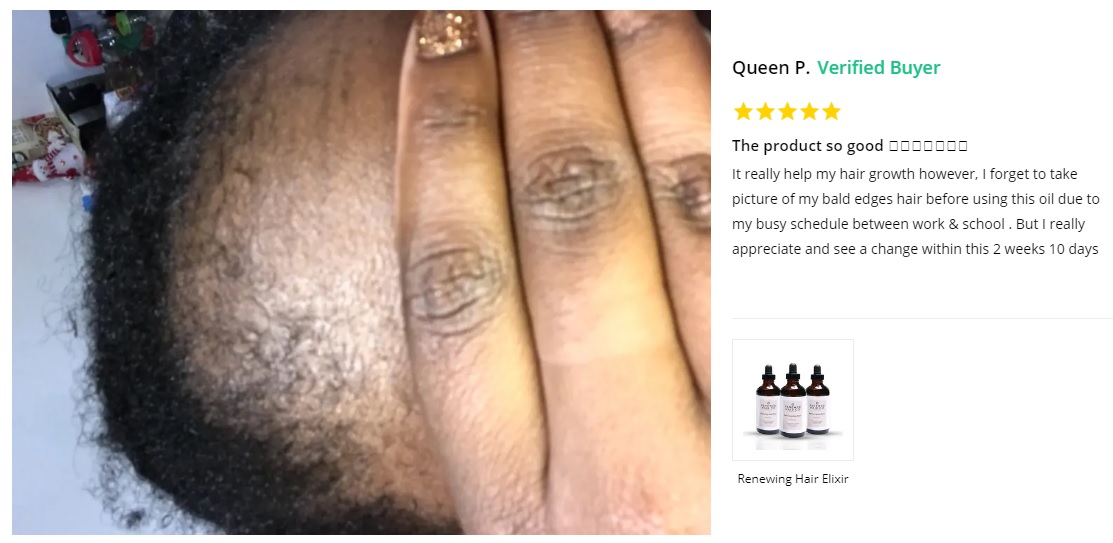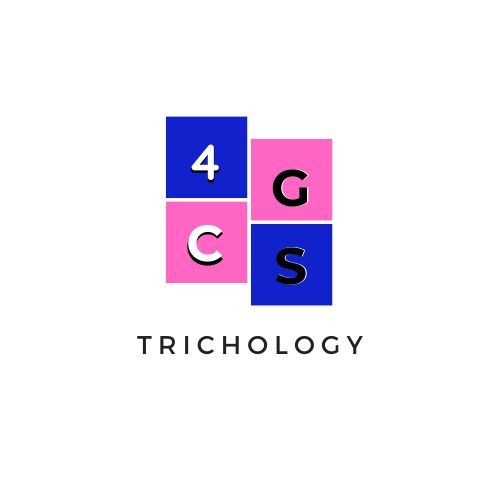How To Grow My Edges Back From Traction Alopecia
- NHP
- Hair Growth 101
- Hair Growth Products
- How to Grow My Edges Back From Traction Alopecia
Many women wanna know “how to grow my edges back from traction alopecia”...
If you’ve lost your edges, I’ll show you some solutions and smart suggestions.
Some readers say that they lost their edges as a result of wearing tight braids and haven’t seen them grow back after years of trying out various methods, end-of-the-day, it’s not easy but it's very doable.
How Does Traction Alopecia Attack Edges & Stunt Growth?
Alopecia is one of those words that natural hair lovers dread hearing.
Traction alopecia is a form of hair loss caused by constant pressure or pulling on the hair follicle and can develop as a result of wearing certain types of heavy protective style braids as well as wigs, making some natural hair Black women more susceptible to the condition.
Sometimes, alopecia is an internal condition, like androgenetic alopecia that is hereditary and hampers your hair growth because of your genetic make-up.
For alopecia cases like those, you’ll need to consult a doctor.
But traction alopecia is about what you do externally.
In reality, traction alopecia is a lifestyle disorder, some think that Black women are biologically more likely to experience traction alopecia than other women. That isn’t the case.
However, faulty hair care practices in the Black community often cause unhealthy traction, and that’s the real culprit. Improper detangling, long weaves, heavy braids, and tight-tension styling of leave-out hair are common causes of traction alopecia.
How To Grow My Edges Back From Traction Alopecia
If you catch your bad habits and hair loss early on, you can quickly reverse the edge damage done by simply avoiding tension-causing hairstyles that tug on your edges, like high ponytails and heavy braids.
The key is to stop bad hair habits as soon as possible to help your hairline edges regrow and look thick and full again. One of the reasons I don’t worry about how to grow my edges back from traction alopecia is because I avoid these habits. I’m also aware of the best hair renewal elixirs that are approved by a medical expert.
Take action fast though, because lost edges from traction alopecia can become nearly irreversible after there’s too much damage to your hair follicles, making it hard to grow your luscious hair back.
Here are some of the best, healthiest ways to save your hair and scalp from traction alopecia:
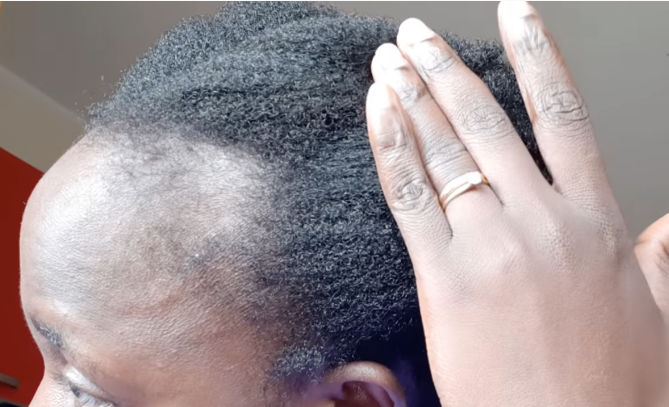 Learn How To Grow Your Edges Back After Traction Alopecia
Learn How To Grow Your Edges Back After Traction AlopeciaTreatment Options To Grow Edges Back from Traction Alopecia
If you're worried about how to grow your edges back, one great treatment to look into is Renewing Hair Elixir by Renewed Hair Co. This hair growth serum was invented by a doctor and is designed to maximize your scalp’s growth capabilities and give you superior hair health.
Using 100% organic ingredients from the highest quality sources, prepare for your hair to undergo a complete transformation with continued use. The Renewing Hair Elixir has shown tremendous benefit in the following areas:
- Stops hair loss in its tracks, whether it be from hormonal, chemical, and physical reasons like traction alopecia.
- Promotes healthy and continuous hair growth and length-retention.
- Strengthens hair strands from the inside-out to slow & stop breakage.
- Moisturizes hair edges to withstand daily wear and tear.
- Protects and revitalizes the scalp & edges from irritation, inflammation, and dryness.
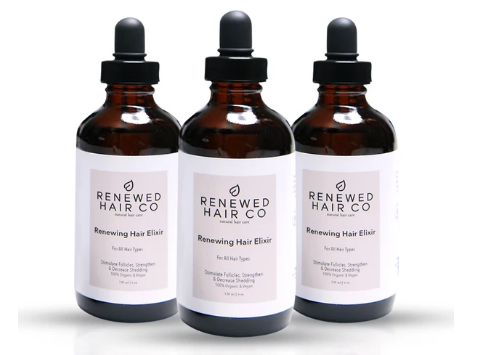 Renewed Hair Elixir for Edges...
Renewed Hair Elixir for Edges...This popular Renewing Hair Elixir is light enough not to weigh down your hair strands with daily use, yet heavy enough to cause a great difference in the health of your hair, but.
This formula was created and tested by the company’s founding physician, is 100% all-natural organic, and has never been tested on animals.
The hair growth elixir ingredients: Vitamin C, Amla (Indian Gooseberry), Lavender, Shikakai (Acacia Concinna), Neem, Cedarwood, Bhringraj (Eclipta Alba), Rosemary, Brahmi (Gotu Kota), Sweet Almond Oil, Eclipta Erecta, Grapeseed Oil, Musk Root, Olive Oil, Avocado Oil, Essential Oil Blend.
All-Natural Treatments for Traction Alopecia & Edges
QUESTION: “I don’t want to see a doctor. Can you tell me how to grow my edges back from traction alopecia naturally at home?”
As long as you don’t have late stage traction alopecia, treating traction alopecia naturally can be done with a consistent hair rejuvenation regimen and the best products for regrowing your edges.
So here’s your 3-pronged inside-out “how to grow my edges back from traction alopecia” plan of attack.
- Internally - take an all-natural hair growth supplement.
- Externally - use a premium hair growth oil, elixir or serum.
- Consistently - do gentle massages on your edges daily/nightly.
To get your hair strong and healthy, there are growth vitamins like True Renew hair supplements. These dietary hair growth pills are designed to nourish & fuel your hair and scalp from the inside out. Loaded with the highest quality of vitamins, minerals, hyaluronic acid and collagen that yield clinically proven results.
True Renew incorporates Ayurvedic ingredients like Gotu Kola, Amla and Goji Berry that complement their groundbreaking Renewing Hair Elixir.
This haircare line is created for scalp and hair restoration and overall therapy for your hair, it purifies the scalp and hair follicles to help grow healthy hair.
Hair and scalp experts also agree that regular gentle scalp massages can help increase blood flow to the scalp. This increases oxygenation in your scalp, allowing nutrients to flow better. It strengthens your hair follicles and encourages healthy edge growth.
Massage gently yet thoroughly in a circular movement whenever you have free time and ideally every day. You can even mix Methylsulfonylmethane powder for hair growth into your oil or elixir for a super-charged hairline edge massage.
But it's important to note that no matter what treatment route you choose, the hair regrowth process is slow, and it can take several months to see results.
How To Grow My Edges Back From Traction Alopecia With Onion Juice
If you’re wondering how to grow your edges back after traction alopecia, you may want to look into using onion juice.
If you’ve never heard of using onion juice on hair you may be a bit skeptical, the thought of the strong onion smell on your hair may scare you.
It has value though, onion juice contains vital vitamins such as sulfur, as well as minerals.
After applying onion juice to your scalp, the sulfur is absorbed and helps to promote hairline edge growth. Onion juice also increases blood flow to the follicles of your hair, which encourages thicker and stronger hair growth.
Be consistent to see new hair growth after about 6 weeks of applying onion juice to your edges. You can use onion juice in conjunction with a premium hair growth elixir to further contribute to halting hair breakage caused by traction alopecia.
Medical Procedures To Grow Your Edges After Traction Alopecia
Question: “Can you tell me how to grow my edges back from traction alopecia if natural treatments fail me?”
Some folks try to fight back against traction alopecia when is it too late, if you’re experiencing late stage traction alopecia or seeing the signs of permanent traction alopecia, you still have medical options to get your edges back.
For example:
Many dermatologists and other skin & hair medical experts offer anti-inflammatory injections that can be helpful for traction alopecia on edges that are slow to recover, in addition, topical minoxidil can be prescribed to help speed up the hair growth recovery process.
Some physicians say that for severe cases of late stage traction alopecia, the only option may be to get a hair transplant, which can be quite expensive. All the more reason to make sure traction alopecia is diagnosed early so you can avoid signs of permanent traction alopecia.
Hair Transplants for Late Stage Traction Alopecia
This is the quickest way to get your edges back is also the most expensive, most complicated, and riskiest.
The hair transplant procedure involves taking hair follicles from other parts of your body and surgically placing them on your hairline edges.
Again, as with all surgeries, hair transplants are not without risks.
This option is for more extreme cases of late stage traction alopecia and should only be considered a last resort.
Plus, hair transplants are super expensive and aren’t cost-effective at all compared to other hair care growth methods and lifestyle changes you can adopt in order to grow your edges again.
There are tons of better ways to proactively take care of your hairline and encourage your edges to grow if you respond to traction alopecia before it is too late.
Doctor-Prescribed Medication For Growing Edges Back
 How To Grow My Edges Back From Traction Alopecia With Doctors Help...
How To Grow My Edges Back From Traction Alopecia With Doctors Help...If you’ve already consulted with your trichologist about balding hairline edges, chances are they prescribed a topical or oral medication to aid in hair growth recovery.
Among these could be minoxidil, which comes in either tablets or a topical liquid applied directly to your scalp to regrow edges from traction alopecia.
Other medicated hair regrowth products include shampoos and gels that are infused with minoxidil.
These are massaged into the affected areas in your hairline edges.
These doctor-prescribed medications dilate your hair follicles, encouraging thicker, faster hair growth.
If you’re dealing with redness, itchiness, and inflammation due to your scalp swelling from the pulling and tugging of your hairstyles, your doctor might recommend a steroidal cream to help soothe it.
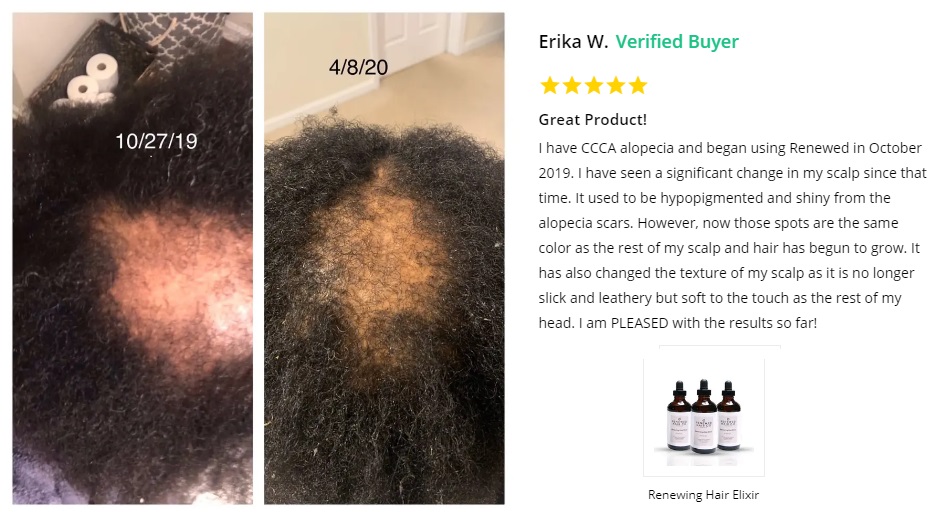 How To Grow My Edges Back From Traction Alopecia AND The Crown...
How To Grow My Edges Back From Traction Alopecia AND The Crown...How To Prevent Traction Alopecia From Happening Again
If you don’t change your poor hair health habits and you continue to expose your edges to pulling, tension-stress and tugging. You’ll only fall prey to the wrath of traction alopecia again, or even worse, you’ll suffer signs of permanent traction alopecia.
The key to preventing this type of hair loss is very simple: just stop doing things that can cause trauma to your edges and causing yourself distress. Here are some preventative measures...
Avoid tight hairstyles
Too-tight cornrows, glued-down wigs, and super-tense pulled-back high ponytails are a big no-no even after your edges recover from traction alopecia.
You don’t wanna go through the same scalp trauma, right?
One simple rule of thumb to go by is to take your hair out of its styling if you feel uncomfortable tension or tightness.
If you can’t freely move your eyebrows or feel a headache after your braiding session, consider these major red flags.
Take your hair out of its misery immediately and let it relax.
If someone else is doing your hair, don’t be afraid to speak up if you feel that they’re being harsh on your hairline.
Don’t just squirm in your seat – save your hair and tell your stylist that you feel like it’s a bit tight on your edges.
Insist on loosening up the hairstyle for your comfort and hairline health.
Avoid chemicals before braiding/weaving
If you plan on getting braids or weaves, make sure you don’t do any chemical treatments on your hair beforehand.
This deals a lot of damage to your hair, making it easy for your edges to snap off as you’re getting braided.
It would also do you good to stay away from harsh shampoos full of sulfates and alcohols that can dry out the hair and make it more brittle.
Switch over to gentler hair cleansers that are hydrating and rich in hair-growing ingredients like coconut oil, aloe vera, biotin, and tea tree oil.
Another tip is to make your braids thicker than you would typically get them.
Thicker locks won’t pull as easily, so the tugging won’t be as painful or irritating to the edges.
Lay off the rubber bands
On the off-chance that you really do need to keep your hair tied to look neat and snatched, ditch the elastic rubber bands that tug at your hair.
Switch over to silk and satin scrunchies that slide off your hair with ease.
You can also opt for telephone cord ties that don’t leave creases in your hair.
Have a better wash day routine
If your hairline is looking thinner than normal, cut down on how often you wash your hair.
Normal shampoo can be very harsh and stripping on the hairline, which can make it recede even more.
If you’re used to washing your hair daily, try to cut it down to two times a week instead, or atleast use a gentle shampoo.
Taking breaks in between wash days also gives your natural hair oils a chance to moisturize your edges properly, strengthening your strands for the time being so they’re not as susceptible to breakage.
That said, make it a point to condition your hair every day, even if you don’t shampoo.
Whether you use a rinse-out or a leave-in conditioner, moisturizing your hair daily will do wonders for keeping your edges strong as you regrow them..
None of these regrowth methods is a simple, quick fix.
It might take a while – maybe even months – to see your edges growing back.
Please Note: Although you can trust these tips and tricks to effectively grow your edges back in a healthy manner, you have to manage expectations when it comes to how long it will take to grow back your hairline.
Conclusion: How To Grow My Edges Back From Traction Alopecia
Sometimes, it feels like traction alopecia may be taking over your hair and your love for expressing yourself through creative protective hairstyles.
But there are ways to fight back and retake control of your life, starting with regrowing the edges of your hair with a good hair care regimen.
Remember that the strands that frame your face are the most delicate, so you have to baby them.
Pamper and nourish your edges with the best hair-growth products with high-quality ingredients and lay low on tension-styling (no matter how tempting it is!), and your hair growth journey back from traction alopecia will be fruitful.
Be consistent, and get thick, full edges to frame your pretty face again.
If you enjoyed our “how to grow my edges back from traction alopecia" article, please share on Facebook!
Follow Author of "How To Grow My Edges Back From Traction Alopecia?" Tutorial...

ABOUT THE AUTHOR: Melissa Lee
Melissa Lee is a Contributing Editor to NHP and a former owner of the BlackhairOMG website. She formed 4C Trichology Growth Services, LLC., a US based hair care consultation service. She has also contributed as a writer and consultant for various hair and beauty websites. Melissa can be followed on Twitter here.
